Search the Blog
Categories
- Books & Reading
- Broadband Buzz
- Census
- Education & Training
- General
- Grants
- Information Resources
- Library Management
- Nebraska Center for the Book
- Nebraska Libraries on the Web
- Nebraska Memories
- Now hiring @ your library
- Preservation
- Pretty Sweet Tech
- Programming
- Public Library Boards of Trustees
- Public Relations
- Talking Book & Braille Service (TBBS)
- Technology
- Uncategorized
- What's Up Doc / Govdocs
- Youth Services
Archives
Subscribe
Category Archives: Library Management
E-rate Form 471 Application Filing Window Dates Announced
 From the USAC website:
From the USAC website:
FY2018 Application Filing Window Dates Announced
The FCC Form 471 application filing window for Funding Year 2018 will open Thursday, January 11, 2018 at noon EST and close Thursday, March 22, 2018. You can read the USAC announcement for full details.
To prepare for the window opening:
- If you haven’t already done so, file your FCC Form 470 now; you don’t need to wait for the window to open.
- To file your FCC Form 470, log into the E-Rate Productivity Center (EPC). You must wait 28 days after your FCC Form 470 is posted to the USAC website before you can close your competitive bidding process, select a service provider, sign a contract (if applicable), and submit an FCC Form 471. If you issue an RFP after the FCC Form 470 is posted, you must wait 28 days from the release of the RFP to select a service provider.
- Thursday, February 22 the deadline to post your FCC Form 470 to the USAC website or issue an RFP and still complete all of these actions before the window closes.
- Log-in or create your account in the E-rate Productivity Center (EPC) and then review, update or assign user rights for anyone who will need access for FY2017. Review your EPC profile and confirm all of your information is accurate including your organization’s name, address and entities. Your profile is now unlocked and available for you to insert any further updates but will be locked again on January 10, 2018 at 11:59 PM EST. Libraries should confirm their square footage, main branch, and public school district of the main branch information is correct and that any bookmobiles or kiosks are included.
You can find additional resources and instructions for using the EPC on the USAC website and on the NLC’s E-rate website.
Please contact Christa Porter if you have any questions or need any assistance submitting your E-rate forms.
Posted in Library Management
Leave a comment
Call for Speakers: Big Talk From Small Libraries 2018
The Call for Speakers for Big Talk From Small Libraries 2018 is now open!
This free one-day online conference is aimed at librarians from small libraries; the smaller the better! We are looking for speakers from small libraries or speakers who directly work with small libraries. Small libraries of all types – public, academic, school, museum, special, etc. – are encouraged to submit a proposal. We’re looking for seven 50-minute presentations and five 10-minute “lightning round” presentations.
Do you offer a service or program at your small library that other librarians might like to hear about? Have you implemented a new (or old) technology, hosted an event, partnered with others in your community, or just done something really cool? The Big Talk From Small Libraries online conference gives you the opportunity to share what you’ve done, while learning what your colleagues in other small libraries are doing. Here are some possible topics to get you thinking:
- Unique Libraries
- Special Collections
- New buildings
- Fundraising
- Improved Workflows
- Staff Development
- Advocacy Efforts
- Community Partnerships
- That great thing you’re doing at your library!
Big Talk From Small Libraries 2018 will be held on Friday, February 23, 2018 between 8:45 a.m. and 5:00 p.m. (CT) via the GoToWebinar online meeting service. Speakers will be able to present their programs from their own desktops. The schedule will accommodate speakers’ time-zones.
If you are interested in presenting, please submit your proposal by Friday, January 12, 2018.
Speakers from libraries serving fewer than 10,000 people will be preferred, but presentations from libraries with larger service populations will be considered.
This conference is organized and hosted by the Nebraska Library Commission and is co-sponsored by the Association for Rural & Small Libraries.
The Public Library Survey is Now Available
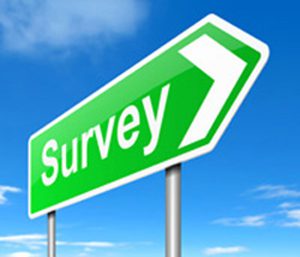 The annual (2016-2017 fiscal year) IMLS public library survey (submitted via Bibliostat) is now available. The survey deadline is February 16, 2018. Completion of the survey is required for your library to receive state aid if you are accredited. If you aren’t accredited, you still have an incentive to complete the survey ($200), called Dollar$ for Data.
The annual (2016-2017 fiscal year) IMLS public library survey (submitted via Bibliostat) is now available. The survey deadline is February 16, 2018. Completion of the survey is required for your library to receive state aid if you are accredited. If you aren’t accredited, you still have an incentive to complete the survey ($200), called Dollar$ for Data.
Please feel free to contact me if you have any questions throughout the process. You can always start the survey, save your submissions, and then resume at a later date. It doesn’t have to all be done at once. Tip: It’s always a good idea to click on the red “save” button in Bibliostat before clicking “next” to the next screen. Thank you in advance for your participation.
Free Webinar TODAY! Not Just Bingo: Library Services and Programs for Older Adults
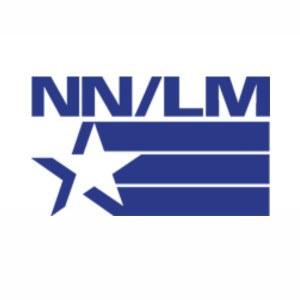 Not Just Bingo: Library Services and Programs for Older Adults | Breezing Along with the RML
Not Just Bingo: Library Services and Programs for Older Adults | Breezing Along with the RML
Today, November 15 at 10am MT/11am CT
Description: To support older adults in our community, libraries must be prepared to provide dynamic, educational and creative programming. Stacey Lewis, Manager of Adult Programming at St. Louis County Library, discusses how to tap into community resources and partnerships to provide a wide range of program opportunities, tips for developing and sustaining partnerships, and specific examples of programs and services that have worked for this large metropolitan library system.
To join the training session:
——————————————————-
1. Go to Go to https://nih.webex.com/nih/k2/j.php?MTID=t2d3144e085574eef9be59b62fcf1231d
2. Enter your name and email address (or registration ID).
3. Enter the session password: mcrbreezing
4. Click “Join Now”.
5. Follow the instructions that appear on your screen.
——————————————————-
To view in other time zones or languages, please click the link
https://nih.webex.com/nih/k2/j.php?MTID=t31b699875e9f4a8498a1cce6463e9e08
——————————————————-
To join the session by phone only:
——————————————————-
To receive a call back, provide your phone number when you join the training session, or call the number below and enter the access code.
Call-in toll number (US/Canada): 1-650-479-3208
Access code: 621 206 616
Annette Parde-Maass
Education and Outreach Coordinator
National Network of Libraries of Medicine | MidContinental Region
Creighton University Health Sciences Library
AnnetteParde-Maass@creighton.edu
402.280.4156
Join the Nebraska WebDewey Group Purchase
This is a good time of year to remind Nebraska librarians that they can save money on a subscription to WebDewey by participating in the Nebraska Dewey Group Purchase!
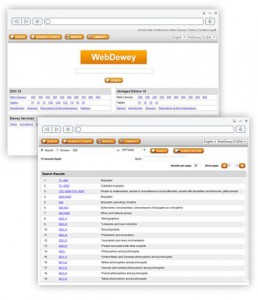 Dewey on the Web
Dewey on the Web
Enjoy web-based access to an enhanced version of the Dewey Decimal Classification (DDC) database through WebDewey. WebDewey includes all content from the recently discontinued print edition and features:
- Regular updates (new developments, new built numbers and additional electronic index terms)
- An easy-to-navigate, simple user interface that is suitable for the novice as well as the power user
- BISAC-to-DDC mappings
Our next WebDewey Group annual subscription will begin on January 1, 2018 and run through December 31, 2018. Libraries may join the Group at any time. Mid-term subscriptions will be prorated.
If your library is interested in subscribing to WebDewey, you’ll find pricing information on our online WebDewey Order Form.
To see WebDewey in action, try the WebDewey 2.0: An Overview tutorial.
If you have any questions about this group subscription opportunity, please contact Susan Knisely, 402-471-3849 or 800-307-2665.
Note: OCLC Membership is NOT required to purchase WebDewey.
Posted in General, Library Management, Technology
Leave a comment
‘E-rate: What’s New for 2018?’ Workshops Scheduled
 ‘E-rate: What’s New for 2018?’ has been scheduled in locations across the state and online.
‘E-rate: What’s New for 2018?’ has been scheduled in locations across the state and online.
What is E-rate? How can my library benefit from E-rate? How do I apply for E-rate?
E-rate is a federal program that provides discounts to schools and libraries on Telecommunications, Internet access, and Internal Connections costs in order to make these services more affordable. There have been some big changes to E-rate since USAC launched the E-Rate Productivity Center(EPC). This new online portal is the main point of entry for all E-rate interactions. With your organizational account you can now use EPC to file forms, track your application status, communicate with USAC, and more.
What does your library need to know to use this new E-rate portal? In this workshop, Christa Porter, Nebraska’s State E-rate Coordinator for Public Libraries, will first cover the basics of the E-rate program and then show you how to access and use your account in EPC to submit your Funding Year 2018 E-rate application.
Dates and locations:
-
- November 6 – Kearney Public Library
- November 7 – McCook Public Library
- November 8 – Scottsbluff Public Library
- November 14 – Plainview Public Library
- November 20 – Blair Public Library
- November 29 – Seward Memorial Library
- December 5 – Online, GoToWebinar
NOTE: A location in the southeast part of the state is being finalized and will be announced soon.
To register for any of these sessions, go to the Nebraska Library Commission’s Training & Events Calendar and search for ‘e-rate 2018’.
NCompass Live: Weeding Your Library Collection
 Join us for the next NCompass Live, ‘Weeding Your Library Collection’, on Wednesday, September 27, 10:00am – 11:00am CT.
Join us for the next NCompass Live, ‘Weeding Your Library Collection’, on Wednesday, September 27, 10:00am – 11:00am CT.
Learn how to keep your library collection user-friendly, increase circulation, and improve the appeal of your library with these weeding tips, tricks, and techniques. Denise Harders, Co-Director of the Central Plains Library System, will discuss the importance of weeding and how to do it successfully. We will also hear about the annual CPLS Month of Weeding project.
Upcoming NCompass Live events:
- Oct. 11 – NO NCOMPASS LIVE THIS WEEK – Enjoy the 2017 NLA/NSLA Annual Conference! Check out the full program and register.
- Oct. 18 – ALA Book Club Central
- Oct. 25 – Google Forms for Your Library
- Nov. 8 – Using YA Literature to Inspire Teen Girls’ Interests in STEM
For more information, to register for NCompass Live, or to listen to recordings of past events, go to the NCompass Live webpage.
NCompass Live is broadcast live every Wednesday from 10am – 11am Central Time. Convert to your time zone on the Official U.S. Time website. The show is presented online using the GoToWebinar online meeting service. Before you attend a session, please see the NLC Online Sessions webpage for detailed information about GoToWebinar, including system requirements, firewall permissions, and equipment requirements for computer speakers and microphones.
Free Webinar! Back to School: School Library Legislation in the Statehouses
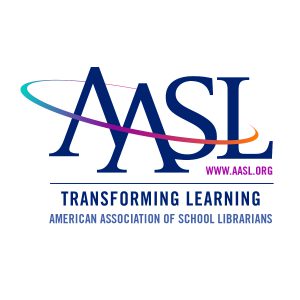 Fewer than half of all states currently require a school librarian in their public schools. In recent years, however, legislation has been introduced in several additional states. Who is leading these efforts and what insights can they share with the rest of us? We will hear from three states and follow their presentations with a facilitated discussion for participants. The representatives from the three states are:
Fewer than half of all states currently require a school librarian in their public schools. In recent years, however, legislation has been introduced in several additional states. Who is leading these efforts and what insights can they share with the rest of us? We will hear from three states and follow their presentations with a facilitated discussion for participants. The representatives from the three states are:
Debra Kachel, Legislative Liaison, Pennsylvania School Librarians Association
James Keehbler, Former President, New Jersey Library Association
Mernie Maestas, President, Missouri Association of School Librarians
When: Wednesday, September 27, 2017, 2:00:00 PM CDT – 3:00:00 PM CDT
Attendance during the live webinar is free and open to all. A seat in the webinar is reserved for the first 100 logins.
All registrants will receive a link to the recorded webinar if it fills to capacity.
The link to the recording will be available at http://www.ala.org/advocacy/chapter-advocacy-exchange
This webinar is brought to you by the American Association of School Librarians (AASL), the Chapter Relations Office (CRO), and the Office for Library Advocacy (OLA) as part of our State Ecosystems initiative to strengthen coalitions across libraries.
Funding for Small-Town Libraries: Kreutz Bennett Donor Advised Fund Grants
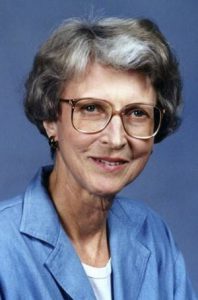 There is still time to apply for grants to small-town public libraries
There is still time to apply for grants to small-town public libraries
Grants of up to $20,000 are available for libraries in communities with populations of fewer than 3,000, thanks to the generosity of a lifelong educator, the late Shirley Kreutz Bennett of Lincoln. Each year the Kreutz Bennett Donor-Advised Fund, an affiliated fund of the Nebraska Community Foundation, accepts proposals for grants for planning that leads to certification, program enhancements, and facilities improvements.
The deadline to submit the initial short application form is October 1, 2017.
Following Ms. Kreutz Bennett’s wishes, a fund advisory committee composed of her nieces and nephews recommends grants in three areas: planning grants leading to accreditation; enhancement grants to improve library services; and facilities grants for new construction or the renovation, restoration or rehabilitation of current libraries.
All grants require a one-to-one match in local funds and evidence that the project has broad community support. Approximately $70,000 to $80,000 is available each year. Grant seekers are encouraged to review the guidelines and application procedures at https://www.nebcommfound.org/give/kreutz-bennett-donor-advised-fund/.
For more information, contact Reggi Carlson, NCF Communications Specialist, (402) 323-7338 or rcarlson@nebcommfound.org.
There are 228 libraries in Nebraska communities with populations under 3,000, which makes them eligible for a grant from the Kreutz Bennett Donor-Advised Fund. Of those, about 100 are not accredited by the Nebraska Library Commission.
“Gaining accreditation is critical to our libraries. It opens the door to other outside funding,” said Jeff Yost, Nebraska Community Foundation president and CEO. “In many small towns, the library may be the only place where some people have access to the internet. Shirley’s legacy gift shows that she had great vision and commitment to people in our small communities. We are honored to help the family of Shirley Kreutz Bennett develop a strategy to share her passion for learning, especially in places where funding continues to shrink,” said Yost.
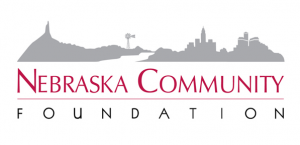 Nebraska Community Foundation is a statewide organization using charitable giving to build prosperous communities. NCF works with volunteer leaders serving more than 200 communities by providing training, strategic development, gift planning assistance and financial management for its affiliated funds located throughout the state. In the last five years, more than 37,000 contributions have been made to NCF affiliated funds, and more than $125 million has been reinvested to benefit Nebraska communities. For more information visit www.NebraskaHometown.org.
Nebraska Community Foundation is a statewide organization using charitable giving to build prosperous communities. NCF works with volunteer leaders serving more than 200 communities by providing training, strategic development, gift planning assistance and financial management for its affiliated funds located throughout the state. In the last five years, more than 37,000 contributions have been made to NCF affiliated funds, and more than $125 million has been reinvested to benefit Nebraska communities. For more information visit www.NebraskaHometown.org.
Posted in Grants, Library Management
Leave a comment
Free Webinar! Beyond Books: Public Libraries Address the Social Determinants of Health
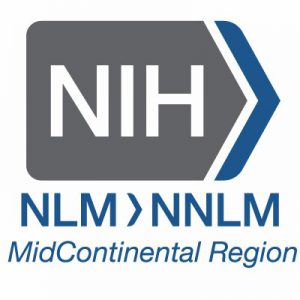 Beyond Books: Public libraries address the social determinants of health Breezing Along with the RML from NNLM MCR
Beyond Books: Public libraries address the social determinants of health Breezing Along with the RML from NNLM MCR
September 20, 2017 10am MT/11am CT
Join Anna Morgan from the Healthy Library Initiative as she discusses public libraries, their influence on social determinants of health, and their importance for community well-being. The Healthy Library Initiative has worked with Philadelphia area public libraries in identifying how the libraries address social determinants of health and how they can build on those programs. To read more about Healthy Library Initiative and what they do, visit http://www.healthylibrary.org/.
Presenter
Anna Uma Morgan, MD, MSc, MSHP is a general internist and recently completed the Robert Wood Johnson Clinical Scholars at the University of Pennsylvania. Dr. Morgan’s work is focused on community-based interventions for addressing the social determinants of health. As a clinical scholar, she worked primarily with the Healthy Library Initiative, a partnership between Penn and the Free Library of Philadelphia aimed at harnessing the power of public libraries to improve population health. She continues to practice primary care in underserved populations.
Questions? Contact:
Annette Parde-Maass
Education and Outreach Coordinator
National Network of Libraries of Medicine | MidContinental Region
Creighton University Health Sciences Library
AnnetteParde-Maass@creighton.edu
402.280.4156
Free Webinar! Libraries Transform: Health Literacy Toolkit
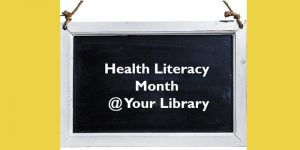 Libraries Transform: Health Literacy Toolkit
Libraries Transform: Health Literacy Toolkit
Date: September 14, 2017
Time: 12-1pm MT/1-2pm CT
Description: October is Health Literacy Month. The American Library Association (ALA) and the National Network of Libraries of Medicine (NNLM) have created a Health Literacy Month toolkit for the Libraries Transform campaign. Join Amanda J. Wilson (NNLM) and Jeff Julian (ALA) as they discuss NNLM’s mission to support health literacy efforts in libraries and explain how to use the key messages, data, and marketing materials to promote health literacy at your library.
1 MLA CE is offered for this session
Annette Parde-Maass
Education and Outreach Coordinator
National Network of Libraries of Medicine | MidContinental Region
Creighton University Health Sciences Library
AnnetteParde-Maass@creighton.edu
402.280.4156
NCompass Live: The New Public Library Director’s Guidebook
 Join us for the next NCompass Live, ‘The New Public Library Director’s Guidebook’, on Wednesday, September 6, 10:00am – 11:00am CT.
Join us for the next NCompass Live, ‘The New Public Library Director’s Guidebook’, on Wednesday, September 6, 10:00am – 11:00am CT.
A new library director has to handle a lot of new things. The Public Library Director’s Guidebook is a compilation of information that should help to answer questions about who’s who and what’s what. Sharon Osenga, Co-Director of the Central Plains Library System; Anneka Ramirez, Director of the Three Rivers Library System; and Holli Duggan, Continuing Education Coordinator at the Nebraska Library Commission, will show off this new resource for new and not-so-new public library directors.
Upcoming NCompass Live events:
- Sept. 13 – One Book For Nebraska Kids & Teens 2017
- Oct. 11 – NO NCOMPASS LIVE THIS WEEK – Enjoy the 2017 NLA/NSLA Annual Conference! Check out the full program and register.
For more information, to register for NCompass Live, or to listen to recordings of past events, go to the NCompass Live webpage.
NCompass Live is broadcast live every Wednesday from 10am – 11am Central Time. Convert to your time zone on the Official U.S. Time website. The show is presented online using the GoToWebinar online meeting service. Before you attend a session, please see the NLC Online Sessions webpage for detailed information about GoToWebinar, including system requirements, firewall permissions, and equipment requirements for computer speakers and microphones.
New Public Library Toolkit for Consumer Health Information Resources
 The McGoogan Library of Medicine at University of Nebraska Medical Center has created a new Public Library Toolkit to support Nebraska public librarians in delivering consumer health information to their communities. The toolkit provides links to training resources for librarians, and state and local health statistics to help with program planning. It also provides websites for consumers that cover health and wellness, finding healthcare, financial assistance, and caregiver support.
The McGoogan Library of Medicine at University of Nebraska Medical Center has created a new Public Library Toolkit to support Nebraska public librarians in delivering consumer health information to their communities. The toolkit provides links to training resources for librarians, and state and local health statistics to help with program planning. It also provides websites for consumers that cover health and wellness, finding healthcare, financial assistance, and caregiver support.
McGoogan Library has been serving the consumer health information needs of Nebraska citizens for over 30 years. The library continues to seek opportunities to support and collaborate with public libraries. If you have feedback or suggestions for the toolkit, please contact Christian Minter, Community Engagement & Health Literacy Librarian at christian.minter@unmc.edu or 402-559-7226.
Public Library Survey Tip No. 6
 Today marks the end of the Bibliostat tip series. We will focus on the federal question of capturing and reporting the number of Wi-Fi sessions your library has in the reporting period (your fiscal year). The idea behind this is that communities may lack areas providing free Wi-Fi, and the local public library often fills that gap. The difficulty lies with how to accurately capture this data, especially in smaller libraries that lack full time IT tech support. Real time technical solutions do exist, but for most these aren’t practical. Today I’ll offer you a simple potential solution to more accurately capture a representative sample of who is using your Wi-Fi. As most of you know, data for the public library survey is sometimes estimated from captured data from an “average week”. In other words, you take a representative sample during a typical time period (e.g. for the number of library visitors you count everyone during a week in the spring, summer, fall, and winter) and then you do a bit of math to get the reported annual figures.
Today marks the end of the Bibliostat tip series. We will focus on the federal question of capturing and reporting the number of Wi-Fi sessions your library has in the reporting period (your fiscal year). The idea behind this is that communities may lack areas providing free Wi-Fi, and the local public library often fills that gap. The difficulty lies with how to accurately capture this data, especially in smaller libraries that lack full time IT tech support. Real time technical solutions do exist, but for most these aren’t practical. Today I’ll offer you a simple potential solution to more accurately capture a representative sample of who is using your Wi-Fi. As most of you know, data for the public library survey is sometimes estimated from captured data from an “average week”. In other words, you take a representative sample during a typical time period (e.g. for the number of library visitors you count everyone during a week in the spring, summer, fall, and winter) and then you do a bit of math to get the reported annual figures.
So the question really is how you more accurately get this sample for Wi-Fi uses? And what about the kids in the parking lot that are using your Wi-Fi? Some libraries have taken to following people around to see if they have a laptop, tablet, or smartphone, and then recording that data (called an “observation estimate”), but who really wants to do that (and it might be more than a bit creepy depending on the circumstances). So here is another option. If you have an android or apple device (e.g. smartphone) capturing these representative samples just got a little easier and a little more accurate, but it does take a bit of work during your sample time period. First, you need to get an app that tells you what devices are connected to your Wi-Fi at a particular point in time. You could search the App Store (Apple) or the Play Store (Android) at length for network scanners or terms such as who is using my Wi-Fi, but I’ll give you a couple of apps that are available for free and work fairly well. These are Fing and EZ Net Scan. In no way am I endorsing these over others; these are just two examples. You should try some out and see what might fit your needs. Downloading these apps offers you the ability, when you are connected to the library Wi-Fi, to see all the other devices that are connected to the same Wi-Fi network. So ideally you would start at a particular point in time, write down the IP addresses for the connected devices, and then re-scan every so often (say every 15-30 minutes) to see if any new devices are connected, or if a device drops connections. Once you collect the data during the sample time period, you just do your math to get an annual figure. Worst case scenario is that you capture data for a typical day and then multiply by the number of days in a year you are open. Better case is that you take a sample for a defined time period, such as a typical day during each of the four seasons (spring, summer, winter, and fall). Shaka.
Posted in General, Information Resources, Library Management, Uncategorized
Tagged Bibliostat, Public library survey
1 Comment
Public Library Survey Tip No. 5
 Shaka. There are two more installments in this series of Bibliostat tips, and both will focus on library technology. Today we will take a look at internet connections and speed. There are two relevant questions: (1) What is the type of your internet connection; and (2) What is your download speed. For the type of your connection, if you don’t know, you will need to ask your internet service provider (ISP) to confirm. These are things like DSL, Cable, Fiber Optic, Satellite, etc. The trickier part to the survey is reporting your download speed, because there are a variety of factors that could affect your speed test. There are a number of different websites and online tools to measure your speed, but we like to recommend the NDT (Network Diagnostic Tool). Completing a test is easy by going to this site and clicking on “Start Test”. After a few minutes, a report will kick out that will tell you what your download speed is. A few things to keep in mind: It’s best to do a test at various times during an “average day”. If you only do one test or test at the same time every day, you are not likely to get an accurate sample of your actual speed. Also, try and perform tests both from your Wi-Fi and over a wired connection, as there might be some variance between the two. When you do multiple tests, report the average speed.
Shaka. There are two more installments in this series of Bibliostat tips, and both will focus on library technology. Today we will take a look at internet connections and speed. There are two relevant questions: (1) What is the type of your internet connection; and (2) What is your download speed. For the type of your connection, if you don’t know, you will need to ask your internet service provider (ISP) to confirm. These are things like DSL, Cable, Fiber Optic, Satellite, etc. The trickier part to the survey is reporting your download speed, because there are a variety of factors that could affect your speed test. There are a number of different websites and online tools to measure your speed, but we like to recommend the NDT (Network Diagnostic Tool). Completing a test is easy by going to this site and clicking on “Start Test”. After a few minutes, a report will kick out that will tell you what your download speed is. A few things to keep in mind: It’s best to do a test at various times during an “average day”. If you only do one test or test at the same time every day, you are not likely to get an accurate sample of your actual speed. Also, try and perform tests both from your Wi-Fi and over a wired connection, as there might be some variance between the two. When you do multiple tests, report the average speed.
The takeaway from collecting this data on your end is that you have a more accurate picture of what speed you are offering compared to what you are actually paying for. Secondly, the speed tests might flag other network issues that you need to look into. For instance, if your wired speed is consistently 60 Mbps, and your Wi-Fi speed lags far behind that, then you might have issues that need to be investigated (such as your Wi-Fi router, it’s range, or some other issue). Finally, measuring your speed is helpful as a comparison tool; you can compare what your library offers compared to your peer libraries.
Posted in General, Library Management, Uncategorized
Tagged Bibliostat, Public library survey
Leave a comment
Public Library Survey Tip No. 4
 Shaka. Today’s public library survey data collection tip (part 4) takes a look at library collections and databases (or “electronic collections”). For those of you who subscribe to local databases or have vendors other than Nebraska OverDrive, this can be a difficult task. But if you only have Nebraska OverDrive here’s the good news: We pull the data for those holdings and circulations and prefill it on your survey. Recently, the survey has been redesigned so that for eBooks, Audiobooks, and downloadable video you only report current holdings. No more of that eBooks added and deleted business.
Shaka. Today’s public library survey data collection tip (part 4) takes a look at library collections and databases (or “electronic collections”). For those of you who subscribe to local databases or have vendors other than Nebraska OverDrive, this can be a difficult task. But if you only have Nebraska OverDrive here’s the good news: We pull the data for those holdings and circulations and prefill it on your survey. Recently, the survey has been redesigned so that for eBooks, Audiobooks, and downloadable video you only report current holdings. No more of that eBooks added and deleted business.
On the survey there are sections for reporting eBooks, Audiobooks, downloadable video titles, and databases/electronic collections. If you subscribe to a service or have a vendor other than Nebraska OverDrive, how do you determine where to report that service/vendor and the number of uses? It depends, but the key question here is: Do the items circulate for a set period, or are they permanently retained by the patron? If they circulate for a set period, then you report in two areas: (1) the library collections portion of the survey (under eBooks, Audiobooks, and downloadable video); and (2) the circulation portion of the survey (adult or children’s). Sometimes, vendors offer a package of items that the library does not select, and that are paid for based on their selection by the patron. For these, you report the number of times the item was selected by the patron, both as holdings and circulation. Sometimes it can be difficult to ascertain whether or not the circulation was children’s or adult. If in doubt, or it isn’t clear, we suggest reporting it under the adult category.
If items are permanently retained by the patron, count each vendor as one local database and report the number of uses (generally this would be a download or a stream in the case of audio or video). Finally, our survey is set up for databases as a repeating group, so we first ask how many total local databases you subscribe to, then we ask you to name each one and report the number of times it was used. To illustrate, say that you have 3 local databases (Example: Zinio, Freegal, and Mango Languages). You first enter the name of the first database (Zinio), and then enter the number of times it was used, then click on Save, then click Add Group to enter the next database (Freegal) and its number of uses.
Posted in General, Library Management, Uncategorized
Tagged Bibliostat, Public library survey
Leave a comment
Public Library Survey Tip No. 3
 Today we have part 3 in our public library survey data collection series. We will focus on expenditures. First off, for this survey you report what you actually spent in the listed categories. Most of the time, this is different than the amount that was budgeted. As such, your reported expenditures shouldn’t be nice round numbers, and should be at least slightly different than what you reported last year. A common issue that arises is the reporting of expenditures for employee benefits. The employee benefit expenditure includes things such as payments for health insurance and retirement, but also social security and FICA (Federal Insurance Contributions Act). This is a bit confusing because FICA typically includes both Social Security and Medicare. In the category, you need to report all of these payments, and the only way it can be a $0 is if you are paid as an independent contractor. If that’s the case, and rarely but sometimes it is, then enter “librarian is paid as an independent contractor” in the note field on the survey because this will undoubtedly come up on an edit check. A few other items of note about expenditures:
Today we have part 3 in our public library survey data collection series. We will focus on expenditures. First off, for this survey you report what you actually spent in the listed categories. Most of the time, this is different than the amount that was budgeted. As such, your reported expenditures shouldn’t be nice round numbers, and should be at least slightly different than what you reported last year. A common issue that arises is the reporting of expenditures for employee benefits. The employee benefit expenditure includes things such as payments for health insurance and retirement, but also social security and FICA (Federal Insurance Contributions Act). This is a bit confusing because FICA typically includes both Social Security and Medicare. In the category, you need to report all of these payments, and the only way it can be a $0 is if you are paid as an independent contractor. If that’s the case, and rarely but sometimes it is, then enter “librarian is paid as an independent contractor” in the note field on the survey because this will undoubtedly come up on an edit check. A few other items of note about expenditures:
- For library materials in electronic format, you report expenditures for eBooks, Audiobooks, e-serials (electronic journals), databases, electronic maps, downloadable videos, and pictures in electronic or digital format;
- Other materials expenditures includes physical items that aren’t books. These typically are DVD’s, CD’s, microfilm, and other things like cake pans, puzzles, games, puppets, toys, and art;
- Capital expenditures should match or come close to matching what you report in capital revenue. However, keep in mind that sometimes funds are allocated in the previous fiscal year, so the capital revenue was reported on last year’s survey even though the expenditure is reported on the current survey;
- Capital expenditures are “major one time projects”, and examples include: (a) site acquisitions; (b) new buildings; (c) additions to or renovation of library buildings; (d) furnishings, equipment, and initial book stock for new buildings, building additions, or building renovations; (e) library automation systems (initial purchase of); (f) new vehicles; and (g) other one-time major projects. Examples include new roofs, new carpet, new windows, sidewalks, etc.; and
- There sometimes is confusion about what to report as computer hardware, accessories, and software and “electronic access”. These are two different categories. For electronic access, you report maintenance or consortium fees association with your integrated library system or costs associated with accessing the internet. For the computer part (hardware, accessories, and software), you report items that are for both staff and public use.
Shaka.
Posted in General, Library Management, Uncategorized
Tagged Bibliostat, Public library survey
Leave a comment
NCompass Live: From Collections to Commons: How we turned stacks to student spaces at UNL
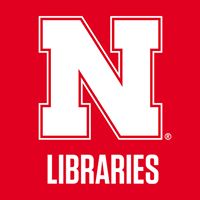 Join us for the next NCompass Live, ‘From Collections to Commons: How we turned stacks to student spaces at UNL’, on Wednesday, July 12, 10:00am – 11:00am CT.
Join us for the next NCompass Live, ‘From Collections to Commons: How we turned stacks to student spaces at UNL’, on Wednesday, July 12, 10:00am – 11:00am CT.
The University of Nebraska-Lincoln Libraries found itself on a fast track to create a 21,000 square foot learning commons in the spring of 2014. Preparations included moving 400,000 volumes off the floor, working with architects, construction managers and furniture vendors to plan the space and select a vendor to provide a coffee shop/bakery. The Adele Coryell Hall Learning Commons opened as scheduled in January of 2016. Our presentation will cover the planning and construction phases as well as management of the space since the opening.
Presenters: Regina Flowers, Adele Hall Learning Commons Manager; Deb Pearson, Head, Libraries Facilities and Planning; Michael Straatmann, Circulation Manager; University of Nebraska-Lincoln Libraries.
Upcoming NCompass Live events:
- July 19 – Finding Your Focus: Tips for Early Career Success
- July 26 – Solar Eclipse 2017 @ Your Library
For more information, to register for NCompass Live, or to listen to recordings of past events, go to the NCompass Live webpage.
NCompass Live is broadcast live every Wednesday from 10am – 11am Central Time. Convert to your time zone on the Official U.S. Time website. The show is presented online using the GoToWebinar online meeting service. Before you attend a session, please see the NLC Online Sessions webpage for detailed information about GoToWebinar, including system requirements, firewall permissions, and equipment requirements for computer speakers and microphones.
Public Library Survey Tip No. 2
 Part 2 in our public library survey data collection series takes programming a step further, focusing specifically on children’s and young adult programs. Reporting these programs can be a bit tricky, mostly because of difficulty in determining which category to count the program. Taking into consideration the fact that some of these programs may overlap and actually draw persons from both the children’s and young adult age groups, you might need to make a determination of what category to put your program in based on the nature of the program. Specifically, what is the primary intended audience? Children (for purposes of this survey) are defined as persons age 11 and under. Young adults (for purposes of this survey) are defined as persons age 12 to 18. Here is your extended cheat sheet:
Part 2 in our public library survey data collection series takes programming a step further, focusing specifically on children’s and young adult programs. Reporting these programs can be a bit tricky, mostly because of difficulty in determining which category to count the program. Taking into consideration the fact that some of these programs may overlap and actually draw persons from both the children’s and young adult age groups, you might need to make a determination of what category to put your program in based on the nature of the program. Specifically, what is the primary intended audience? Children (for purposes of this survey) are defined as persons age 11 and under. Young adults (for purposes of this survey) are defined as persons age 12 to 18. Here is your extended cheat sheet:
- Story times and summer reading events should be counted as programs;
- Do NOT count library services that are provided on a one-on-one basis (such as computer assistance or one-on-one homework help);
- Count programs that the library either sponsors or co-sponsors;
- Count programs even if they are held off-site (not at the library);
- If a program is offered in a series, count each program in the series (e.g. if you have a discussion group that meets 6 times, that counts as 6 programs); and
- IMPORTANT: For children’s program attendance – “Include adults who attend programs intended primarily for children.” And: For young adults – “Please count all patrons that attend the young adult programs regardless of age.”
Shaka.
Posted in General, Library Management, Uncategorized
Tagged Bibliostat, Public library survey
Leave a comment
Public Library Survey Tip No. 1
 Today marks the start of a multi-part weekly series of tips for collecting data for your next public library survey using Bibliostat. Yes, I know, it seems like this survey just ended, and it did, but you should be collecting your data now for input into the next survey when the cycle begins this coming November. Keep in mind that the next survey covers the time period of your library’s fiscal year, which in most cases is either October 1 to September 30 OR July 1 to June 30. A few libraries have fiscal years that run from January 1 to December 31. A quick reminder about terminology: Bibliostat is the vendor that we use to collect the data, but the survey itself is the IMLS public library survey. Today’s post will focus on programs in general. Most of you know what a library program is, but to clarify what you count for a program on this survey, here is the definition:
Today marks the start of a multi-part weekly series of tips for collecting data for your next public library survey using Bibliostat. Yes, I know, it seems like this survey just ended, and it did, but you should be collecting your data now for input into the next survey when the cycle begins this coming November. Keep in mind that the next survey covers the time period of your library’s fiscal year, which in most cases is either October 1 to September 30 OR July 1 to June 30. A few libraries have fiscal years that run from January 1 to December 31. A quick reminder about terminology: Bibliostat is the vendor that we use to collect the data, but the survey itself is the IMLS public library survey. Today’s post will focus on programs in general. Most of you know what a library program is, but to clarify what you count for a program on this survey, here is the definition:
A program is any planned event which introduces the group attending to any of the broad range of library services or activities or which directly provides information to participants.
Now that is pretty broad, so here is your cheat sheet:
- Library tours can be counted as programs;
- Examples of some programs include film showings, lectures, story hours, English and citizenship classes, and book discussion groups;
- Do NOT count library services that are provided on a one-on-one basis (such as computer assistance or one-on-one homework help);
- Count programs that the library either sponsors or co-sponsors;
- Count programs even if they are held off-site (not at the library); and
- If a program is offered in a series, count each program in the series (e.g. if you have a discussion group that meets 6 times, that counts as 6 programs).
As always, if you have any questions about what to count or not count, feel free to let me know. Next week we will expand on the program counts to include specific children’s and young adult programs. One final note, if you might not have been counting some programs you should have been counting, and now you are, your count will likely increase from what was reported in the prior year’s survey. If this is the case, it might trigger an edit check in Bibliostat. This means that you will need to enter a note in the note field explaining the increase (or decrease). It is perfectly acceptable to put something in that field such as “we did not count programs held off site last year, and this year we did”. Shaka.
Posted in General, Information Resources, Library Management, Uncategorized
Tagged Bibliostat, Public library survey
Leave a comment

